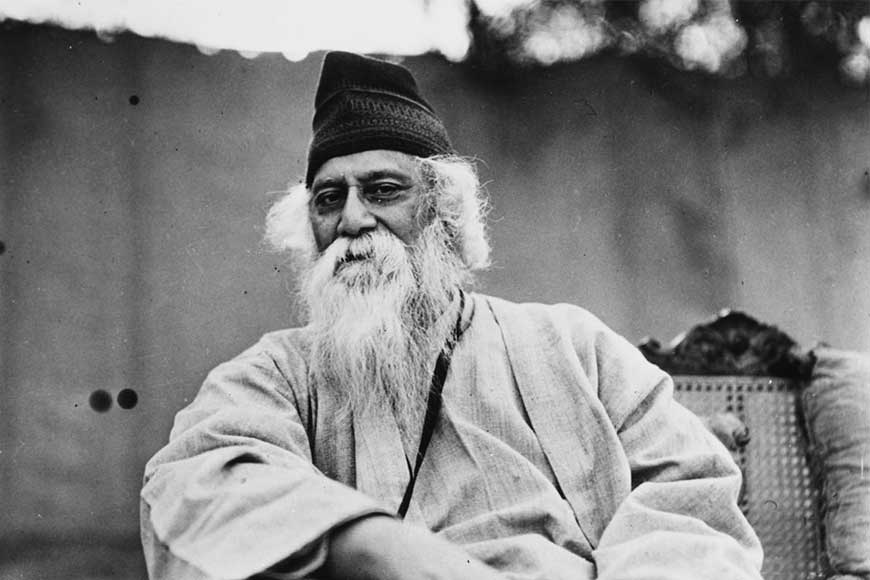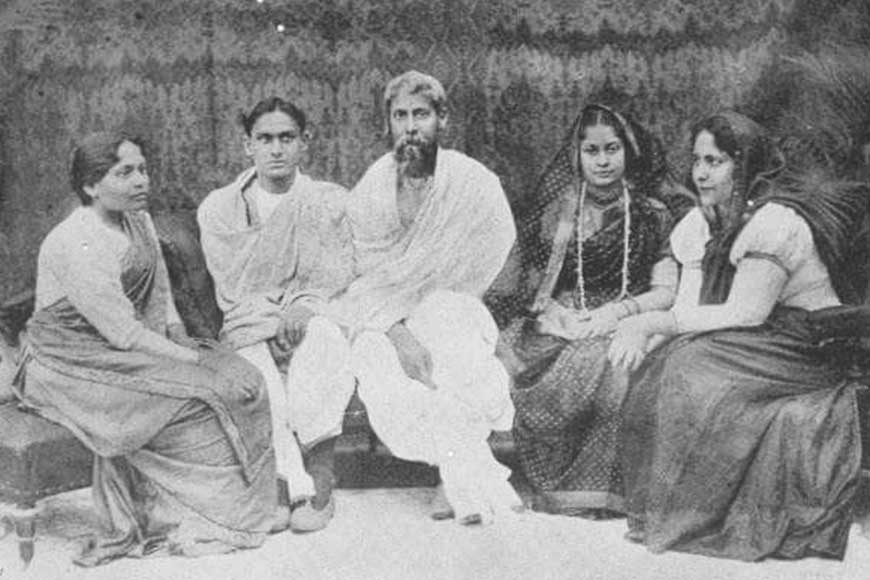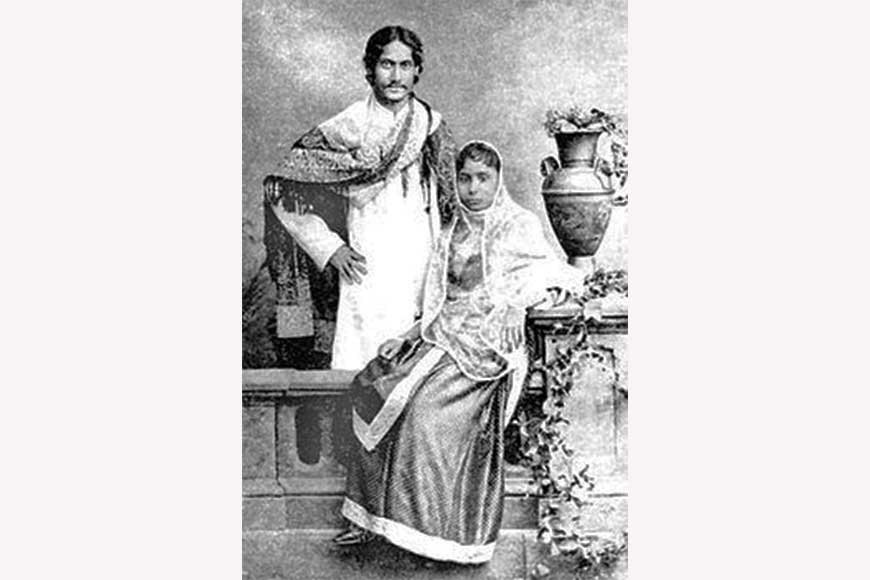Death is not extinguishing the light; it is putting out the lamp as dawn has come – Rabindranath Tagore

Rabindranath Tagore was fascinated by the concept of death. He was curious to explore life after death. His preoccupation with death goes back to a series of traumatic events of his life. Tagore was 14 when his mother, Sarada Devi, passed away. Later in life he had to encounter the death of many loved ones, one after another. Later in life he had to encounter the death of many loved ones, one after another—his sister-in-law Kadambari Devi, who was a dear friend and a significant influence, his wife Mrinalini Devi, his daughters Madhurilata and Renuka, and his son, Shamindranath.
He shared his love for literature with his sister-in-law Kadambari,, and the two were very close friends. However, tragedy struck for the second time when Kadambari committed suicide on 21 April 1884, just four months after he married Mrinalini Devi, and he was left devastated. In his autobiography, penned at the age of 50, he writes:
I had seen nothing beyond life and accepted it as ultimate truth. When of a sudden death came, and in a moment tore a gaping rent in its [life’s] smooth-seeming fabric, I was utterly bewildered. All around, the trees, the soil, the water, the sun, the moon, the stars, remained as immovably true as before; and yet the person who was as truly there, who, through a thousand points of contact with life, mind and heart, was ever so much more true for me, had vanished in a moment like a dream. What perplexing self-contradiction it all seemed to me as I looked around! How was I ever to reconcile what remained with which had gone?
The terrible darkness which was disclosed to me through this rent, continued to attract me night and day as time went on. I would ever and anon return to take my stand there and gaze upon it, wondering what there was left in place of what had gone. Emptiness is a thing man cannot bring himself to believe in: that which is not, is untrue; that which is untrue, is not. So our efforts to find something where we see nothing are unceasing.
 Tagore with his family
Tagore with his family
Just as a young plant confined in darkness stretches itself on tiptoe as it were, to reach the light, so the soul, when death surrounds it with negation, tries and tries to rise into affirmatory light … Yet amid unbearable grief, flashes of joy sparkled in my mind on and off in a way which quite surprised me. The idea that life is not a fixture came as tidings that helped to lighten my mind. That we are not forever prisoners behind a wall of stonyhearted facts was the thought that kept unconsciously rising uppermost in rushes of gladness.
Rabindranath Tagore was curious and attempted to find a meaning in death. All through his adult life, both in his prose writings and in his poetry, death had been a recurrent motif of his meditations. In the cult poem, Mrityunjay (The One Who Defied Death), the poet writes,
From afar I thought/ You were undefeatable, cruel, the very earth trembling under your rule./ Your frowns indicated waves of approaching torment –
The blows fell./ My ribs shuddered,/ Clutching my chest/ I asked, ‘Is there much more,/ Another final/ Thunderbolt?’/The blows fell./ Just this? Have you nothing more?/ My fear faded away./ No matter how great you are,/ You cannot be greater than death. ‘I am greater than death’ will be the words I speak/ Before I take my final bow.
Elisabeth Kuebler-Ross, the author of the popular and widely influential ‘On Death and Dying’, believed that no one had thought more deeply on death than Rabindranath Tagore and printed his quotations at the head of each chapter of her book.
At one stage, he was attracted to the occult art to connect with his near and dear ones. And then Tagore gave this search his imprint in the insistence that death has a meaning because of the existence of life. If, to leave this world be as real as to love it—then there must be a meaning in the meeting and parting of life. It was this conviction with which he wrote,
Death is not extinguishing the light; it is only putting out the lamp because the dawn has come.
In 1902, he lost both his wife and daughter, Renuka. His father passed away in January 1905, and in 1907, on the fifth death anniversary of his wife, his son Shamindranath died of cholera at the age of 11. When ‘Shami’ (that’s how he called Shamindranath) lay in his deathbed, Rabindranath prayed in the adjoining room. He later penned an account of that fateful night thus:
 Mrinalini Devi and Rabindranath Tagore
Mrinalini Devi and Rabindranath Tagore
When his last moment was about to come I was sitting alone in the dark in an adjoining room, praying intently for his passing away to his next stage of existence in perfect peace and well-being. At a particular point of time my mind seemed to float in a sky where there was neither darkness nor light, but a profound depth of calm, a boundless sea of consciousness without a ripple or murmur. I saw the vision of my son lying in the heart of the Infinite and I was about to cry to my friend, who was nursing the boy in the next room, that the child was safe, that he had found his liberation. I felt like a father who had sent his son across the sea, relieved to learn of his safe arrival and success in finding his place. I felt at once that the physical nearness of our dear ones to ourselves is not the final meaning of their protection. It is merely a means of satisfaction to our own selves and not necessarily the best that could be wished for them.
It is with this conviction, Rabindranath wrote: Andhakarer utsa hote utsarito alo/ Shei toh tomar alo/ Sakar dwando-birodh majhe jagroto je bhalo/ Shei toh tomar bhalo….. (The light radiate from the centre of darkness/ That is thy glow/ The goodness that originates from all conflicts/ That is thy goodness/ …….. Life that cradles death on its own/ That is thy life/ Dusty ground that lie beneath the world populace/ That is thy heaven/ You who conceals yourself despite being universal/ That is thee for me).
The philosopher-poet celebrated death. ‘Maran hey tuhu mamo shyam saman’. He weaves the eternal tale of love around life and death where all living things combined together is Radhika who pines for her celestial lover, Shyam/Krishna. When Shyam arrives, the soul unites and love completes a full circle.










